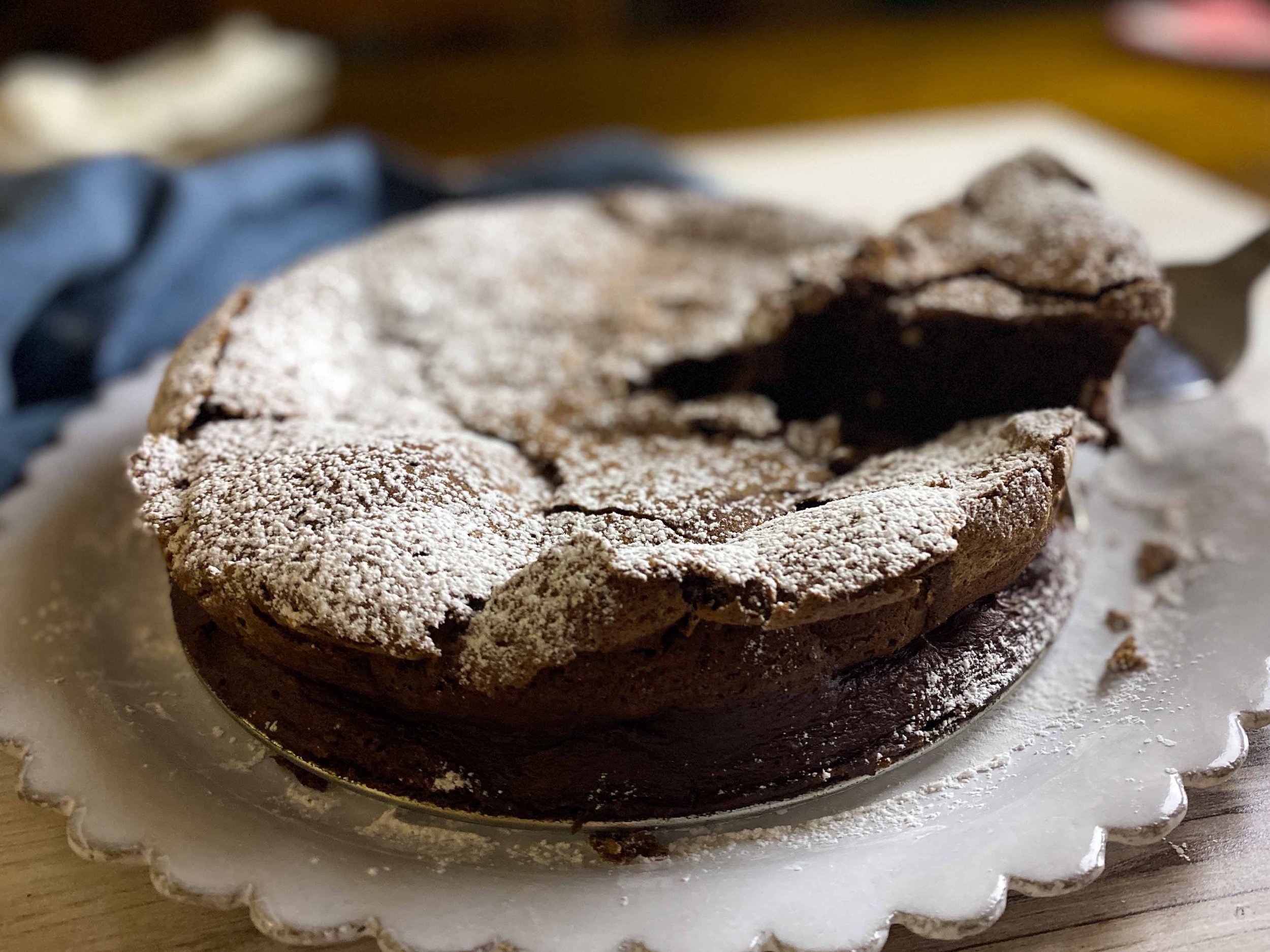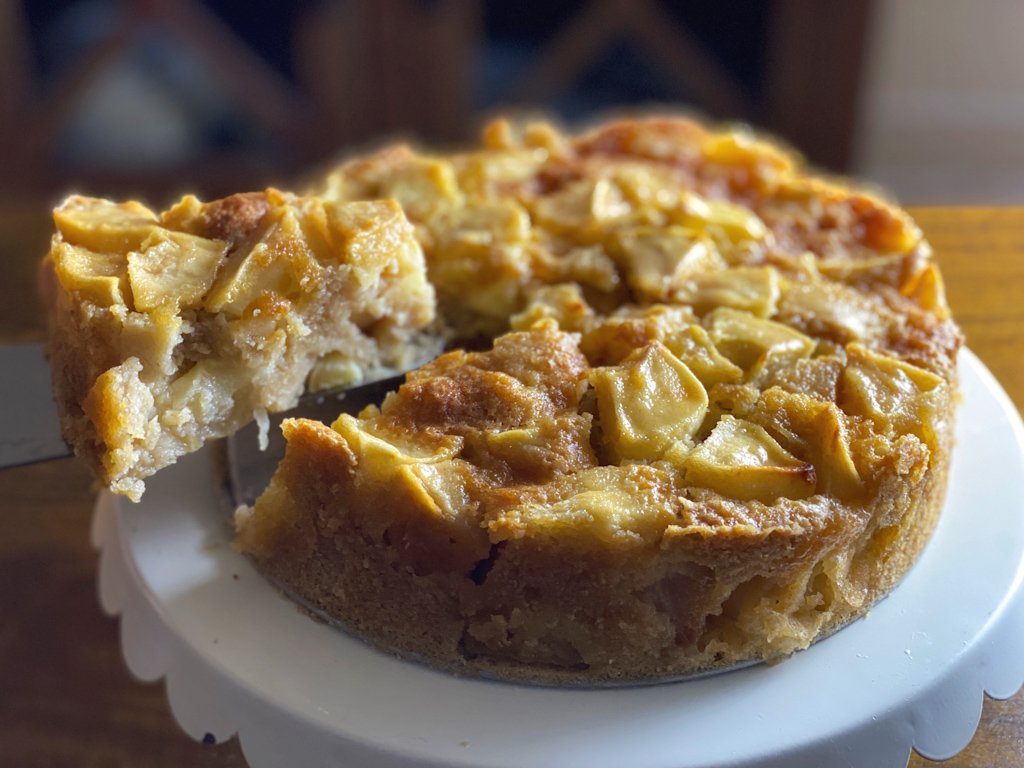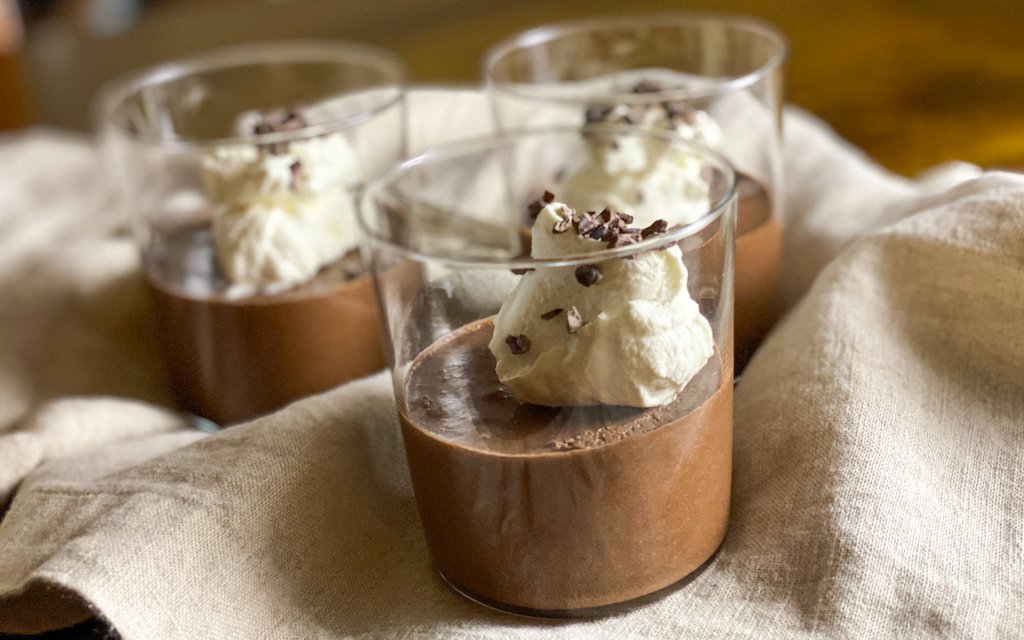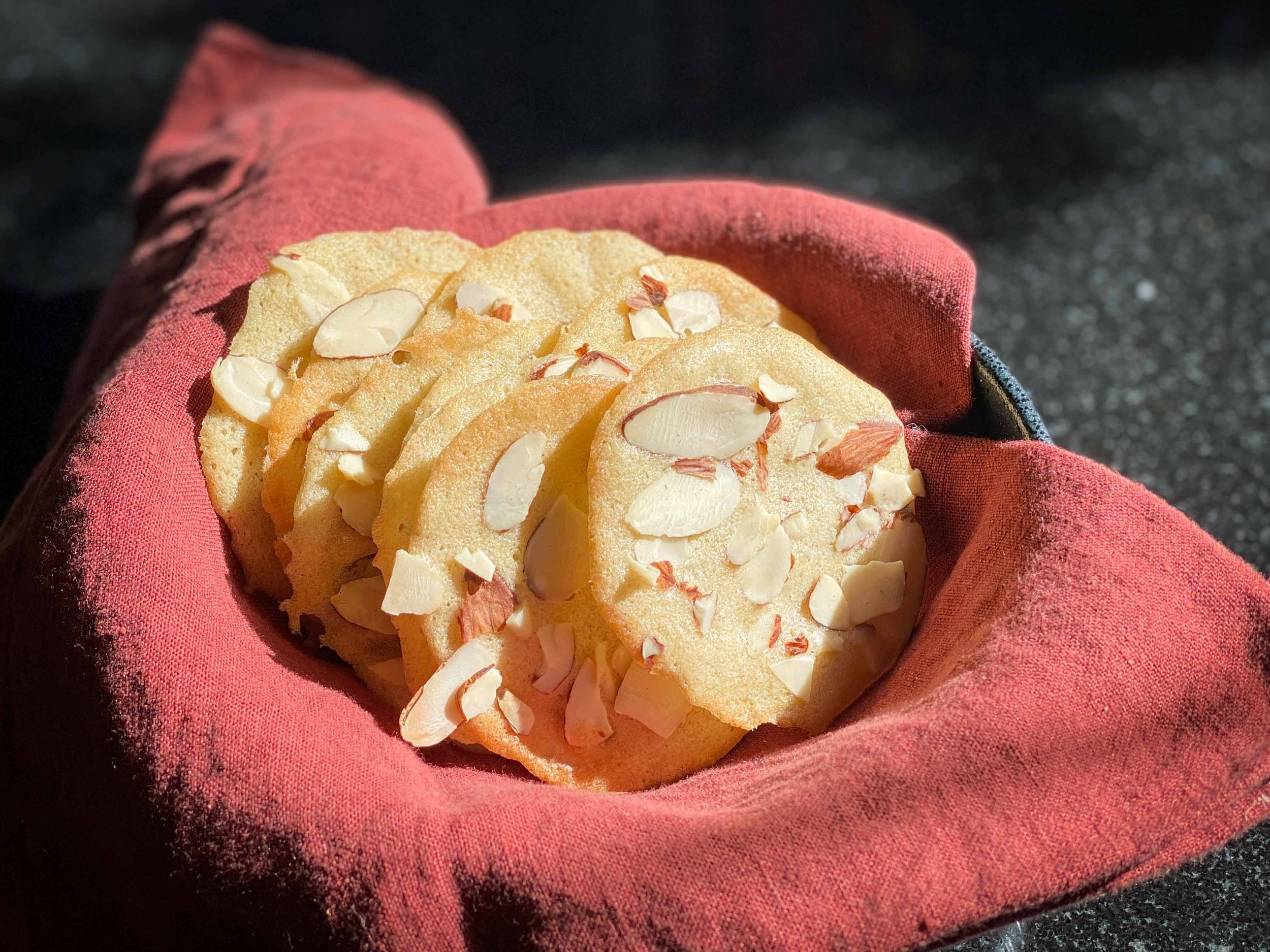Torta al Cioccolato — flourless chocolate cake — from ‘Via Carota’ cookbook comes together with butter, eggs and two bars of chocolate.
By Leslie Brenner
Got a couple of chocolate bars, four or five apples or a pack of sliced almonds? If so, with a couple pantry basics you can pull together a festive last-minute dessert that will dazzle and delight.
For those of us who resist planning ahead (it wasn’t our fault, right?!) I’ve pulled together a few of my favorite easy treats — including ways to adapt to what you have on hand.
A sumptuous torta al cioccolato
The magnificent flourless chocolate cake shown above, with its crackly crust and moist, rich center, can be yours if you’ve got half a dozen eggs, two 3.5-ounce chocolate bars, sugar, salt and cocoa powder or flour for dusting the pan.
Apple-Calvados (or -Brandy, -Rum, or -Whiskey) Cake
During apple season, I try to make sure I always have four or five apples on hand — first because I love eating them, but also in case I feel like baking up this easy beauty. Any kind of apples will do.
The cake evolved from a Dorie Greenspan recipe that called for rum. I love it with the French apple-brandy Calvados to double up on the apple flavor, but any kind of brandy (American apple-brandy, Spanish Brandy de Jerez, French Cognac or Armagnac, etc.), rum or even bourbon or other whiskey work, too. The types of flour you can use are flexible, as well.
Your Favorite Chocolate Mousse
Here’s a chocolate mousse you can make if you have two 3.5-ounce chocolate bars and four eggs. Flavor it however you like: with vanilla or almond extract, just about any kind of liqueur, or espresso. The garnish is a free-for-all, too.
Almond Tuiles
Got sliced almonds? Make these crisp and pretty almond tuiles — which are lovely on their own or serve with ice cream or cake.
RECIPE: Almond Tuiles
Want more ideas?
Here are a few more desserts you can pull together easily with ingredients you might have:
RECIPE: Cardamom-Pumpkin Spice Bread
RECIPE: Mexican-Chocolate Situation
RECIPE: Syrian-Lebanese Rice Pudding
RECIPE: ‘The Perfect Scoop’ Tangerine Sorbet
RECIPE: Flourless Chocolate-Almond Cake
















